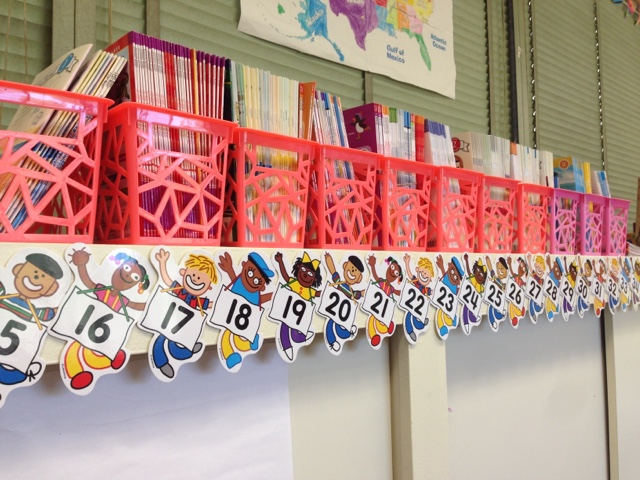Let's get real for a minute. Who ever sits at that desk, really? Other than the occasional "Let me look for that Pinterest picture" moment, or the times you grade papers on your lunch break, no one sits there. Seriously. So why not put that space to some use during the day?
I know there's a whole movement about getting rid of your teacher desk to make way for more student space, but I'm not quite there yet. I'm willing to admit that I rarely (if ever) sit there, but I still like having a space to spread papers, toss To-Do-Later items, and display office supplies in pretty jars. So, until I jump aboard the no-desk bandwagon and get rid of my desk entirely, I'll continue use it as a student incentive.
Teachers that I mention this idea to nearly always respond the same way: "I'd be afraid they would touch my things!" Now, know everyone's class is different, but my experience in letting kids sit at my desk has always been positive.
First of all, this is not a first month of school option. I make sure students know me and my expectations very well before introducing my desk as an option for students' work space. Letting kids sit at your desk is not the time to practice defining boundaries! (Granted, there will always be a student that you would give your car keys and ATM card to from Day 1, but I'm talking about the entire class in general.)
I would only begin letting students sit at your desk after they have demonstrated the ability to show respect for the rules and procedures of your classroom. Once that happens, my students are in awe of how much I trust them, and even my most wild child will work extra hard to show that he/she is worthy of sitting at this place of honor. I've never once been afraid that a student will take or break something from my desk. Like I said, it's an honor they want to prove themselves worthy of, and they will most often do their very best work while sitting there! (This could also be because they are separated from other distractions, like chatty table mates.)
Depending on the size of your desk chair (last year I used a director's chair at my desk), you can often fit two kids behind your desk at once. Two first graders on the smaller side fit easily in my director's chair.
Once the lesson/independent work time was over, I'd tell the student(s) at my desk, "Okay, time to go back to your own desk!" And they'd quietly gather their notebook and pencil box and happily trot back to their own desk again. A single student will rarely sit at my desk for the entire day, but I will rotate different kids, allowing a handful the opportunity over the course of a morning or afternoon.
Even if you have reservations about it, I would urge you to give it a try. Start with your most responsible student, and let him/her model respectful behavior. But given the chance, I bet even your most troublesome student will thrive and complete his/her best work while sitting behind your desk.










































